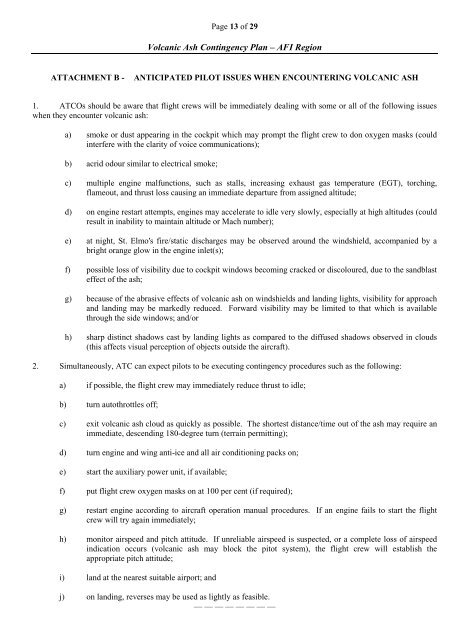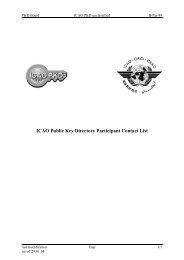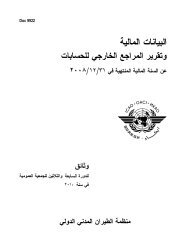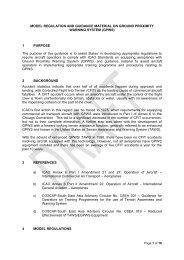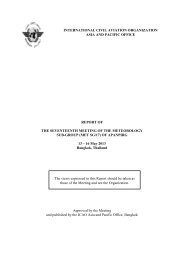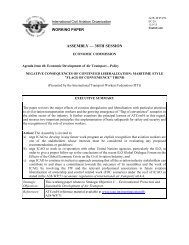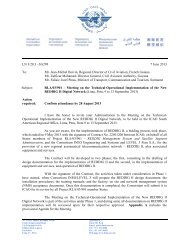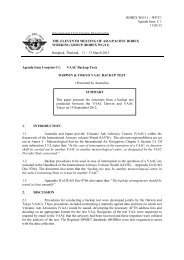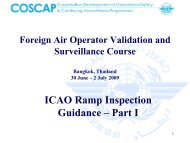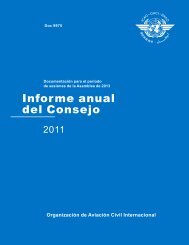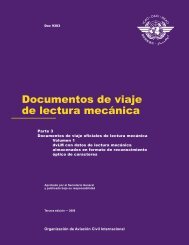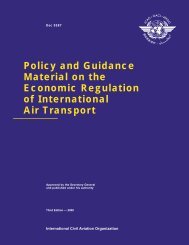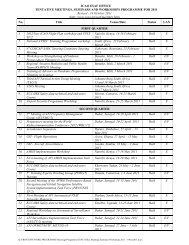afi met bulletins exchange (ambex) handbook - ICAO
afi met bulletins exchange (ambex) handbook - ICAO
afi met bulletins exchange (ambex) handbook - ICAO
You also want an ePaper? Increase the reach of your titles
YUMPU automatically turns print PDFs into web optimized ePapers that Google loves.
Page 13 of 29<br />
Volcanic Ash Contingency Plan – AFI Region<br />
ATTACHMENT B - ANTICIPATED PILOT ISSUES WHEN ENCOUNTERING VOLCANIC ASH<br />
1. ATCOs should be aware that flight crews will be immediately dealing with some or all of the following issues<br />
when they encounter volcanic ash:<br />
a) smoke or dust appearing in the cockpit which may prompt the flight crew to don oxygen masks (could<br />
interfere with the clarity of voice communications);<br />
b) acrid odour similar to electrical smoke;<br />
c) multiple engine malfunctions, such as stalls, increasing exhaust gas temperature (EGT), torching,<br />
flameout, and thrust loss causing an immediate departure from assigned altitude;<br />
d) on engine restart attempts, engines may accelerate to idle very slowly, especially at high altitudes (could<br />
result in inability to maintain altitude or Mach number);<br />
e) at night, St. Elmo's fire/static discharges may be observed around the windshield, accompanied by a<br />
bright orange glow in the engine inlet(s);<br />
f) possible loss of visibility due to cockpit windows becoming cracked or discoloured, due to the sandblast<br />
effect of the ash;<br />
g) because of the abrasive effects of volcanic ash on windshields and landing lights, visibility for approach<br />
and landing may be markedly reduced. Forward visibility may be limited to that which is available<br />
through the side windows; and/or<br />
h) sharp distinct shadows cast by landing lights as compared to the diffused shadows observed in clouds<br />
(this affects visual perception of objects outside the aircraft).<br />
2. Simultaneously, ATC can expect pilots to be executing contingency procedures such as the following:<br />
a) if possible, the flight crew may immediately reduce thrust to idle;<br />
b) turn autothrottles off;<br />
c) exit volcanic ash cloud as quickly as possible. The shortest distance/time out of the ash may require an<br />
immediate, descending 180-degree turn (terrain permitting);<br />
d) turn engine and wing anti-ice and all air conditioning packs on;<br />
e) start the auxiliary power unit, if available;<br />
f) put flight crew oxygen masks on at 100 per cent (if required);<br />
g) restart engine according to aircraft operation manual procedures. If an engine fails to start the flight<br />
crew will try again immediately;<br />
h) monitor airspeed and pitch attitude. If unreliable airspeed is suspected, or a complete loss of airspeed<br />
indication occurs (volcanic ash may block the pitot system), the flight crew will establish the<br />
appropriate pitch attitude;<br />
i) land at the nearest suitable airport; and<br />
j) on landing, reverses may be used as lightly as feasible.<br />
— — — — — — — —


